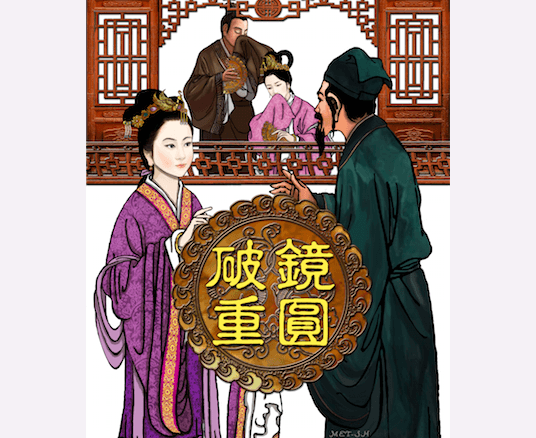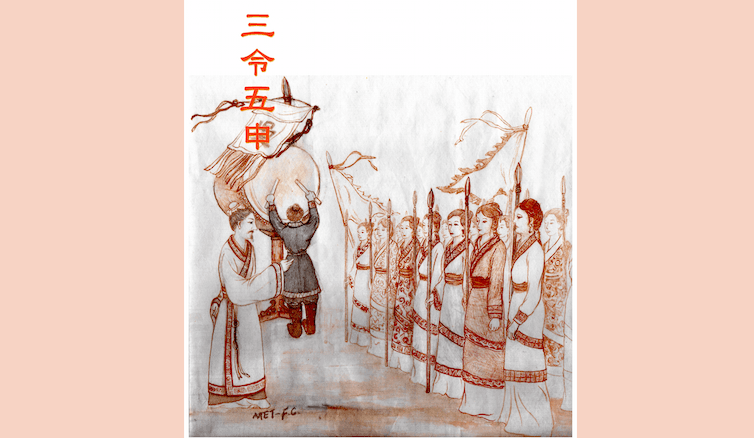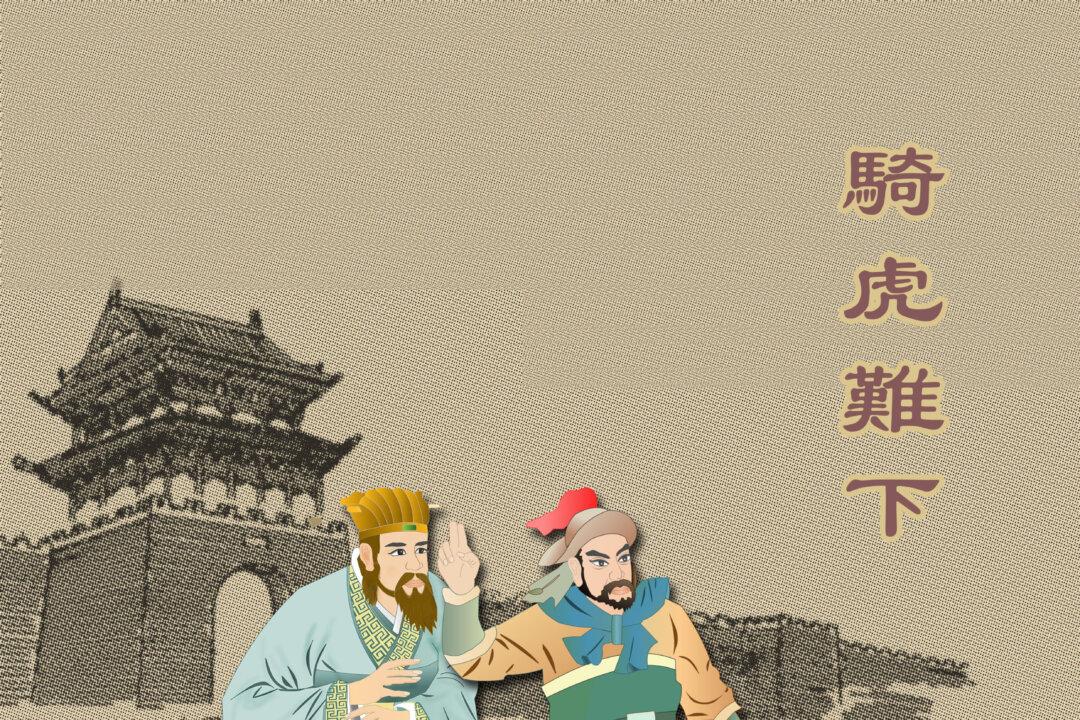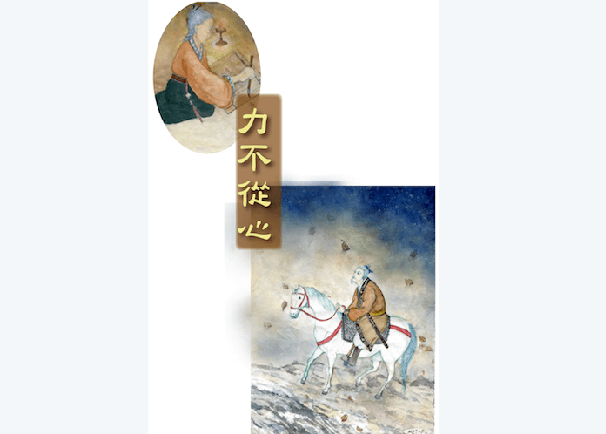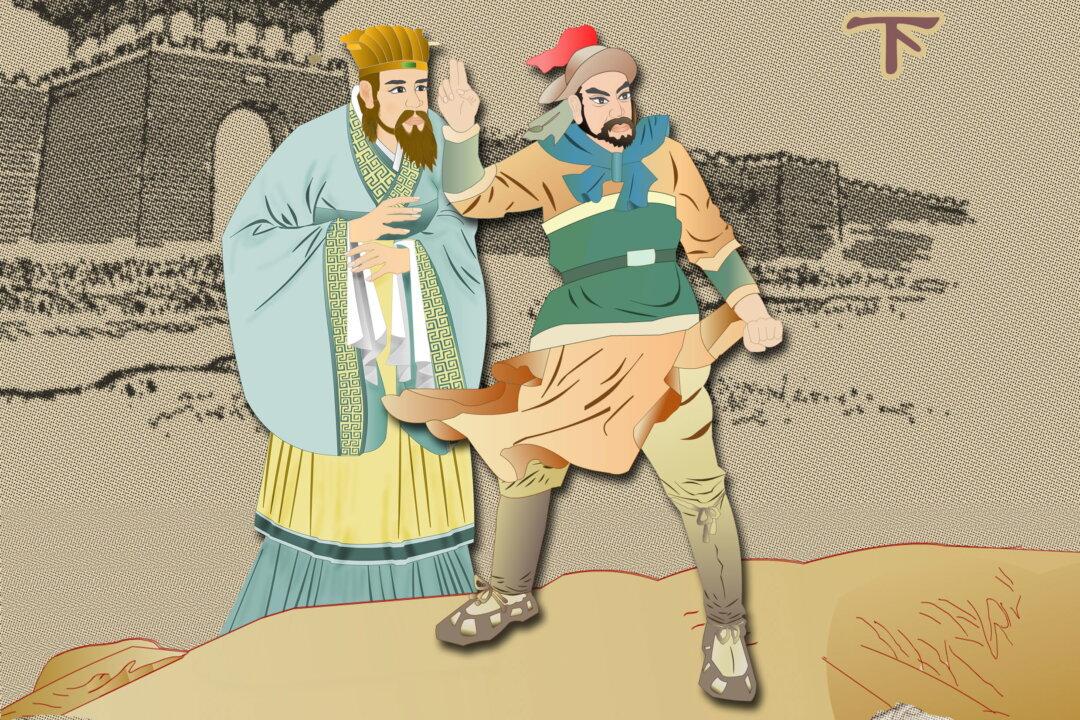During the late Southern and Northern Dynasties (A.D. 420–581), in the state of Chen, there lived a princess named Lechang who was known for her beauty and intelligence. Attracted by his talent and knowledge, she married an official named Xu Deyan.
The young couple loved each other dearly and, for a time, lived happily together. Before long, however, soldiers from Sui invaded the state of Chen. The happy couple had to flee the palace and go into exile.
Before they left the palace, Deyan took a bronze mirror and broke it in half. He gave one half to his princess-wife, keeping the other half for himself, and told her that it was a symbol of their union in case they were separated and lost contact with each other.
They vowed that, if they got separated, they would look for each other in the capital’s market place on the 15th day of the first lunar month, which was the Lantern Festival. Then, each hid their half of the mirror away and left the palace.
Soon the state of Chen fell and, in the ensuing chaos, the young couple was separated.
The next year, Deyan took his half of the mirror to the market place as planned, expecting to meet his dear wife there and to join the two halves of the mirror together again. He searched through the entire market, but could find no trace of her.
Suddenly, he saw a man selling half a mirror. Recognizing it as the one belonging to his wife, he approached the man and asked about the princess.
The man revealed to Deyan that he was the princess’s servant sent to the marketplace with her half of the mirror since she could not come to meet her husband herself. Sadly, after the fall of the state of Chen, she had been taken to the powerful minister Yang Sui to be his concubine.
Upon hearing this news, tears rolled down Deyan’s cheeks. He took out a brush pen and wrote a poem on the princess’s half of the mirror. “You left with the mirror, now I see the mirror but not you. Without Chang E in the moon, its brightness is wasted.” He, then, gave it to the servant to return to the princess.
When the princess read the poem on her half of the mirror, she could not help sobbing for days, as she missed her husband so.
Learning of their true love, the minister was very sympathetic. He also realized he could never win her love. So, he sent for Deyan to come reclaim his wife and, thus, the princess and Deyan were reunited.
This story is found in Stories in Verse (Ben Shi Shi)(1), a collection of novellas compiled by Meng Q during the Tang Dynasty (A.D. 618–907).
It was the inspiration for the idiom “A broken mirror joined together.” Metaphorically, it means the reunion of husband and wife after a forced separation. The idiom is usually used to refer to the reunion or reconciliation of a couple after they lose touch or break up.
Note:
1. “Stories in Verse,” or “Ben Shi Shi (本事詩),” includes poetic versions of stories that were often known in prose form. There are seven categories: Sentiment, Affective Matters, Hidden Treasures, Sadness and Anger, Exploring the Unusual, Studying Calamities, and Jokes.
